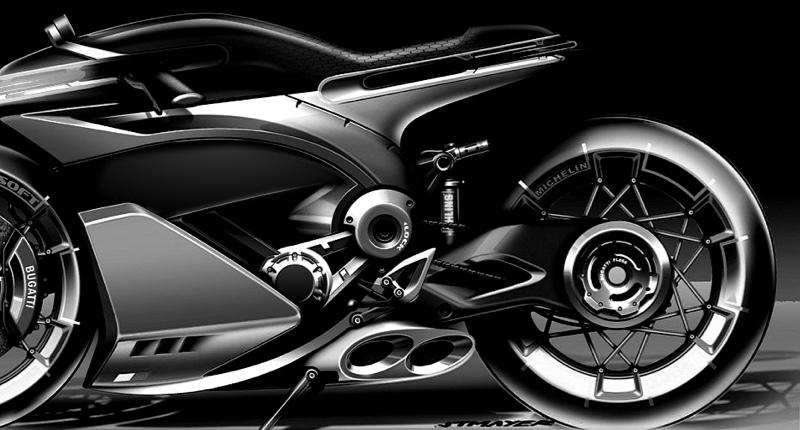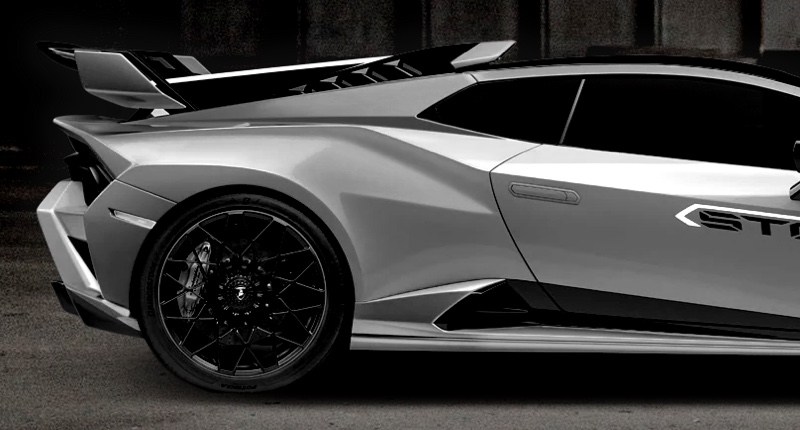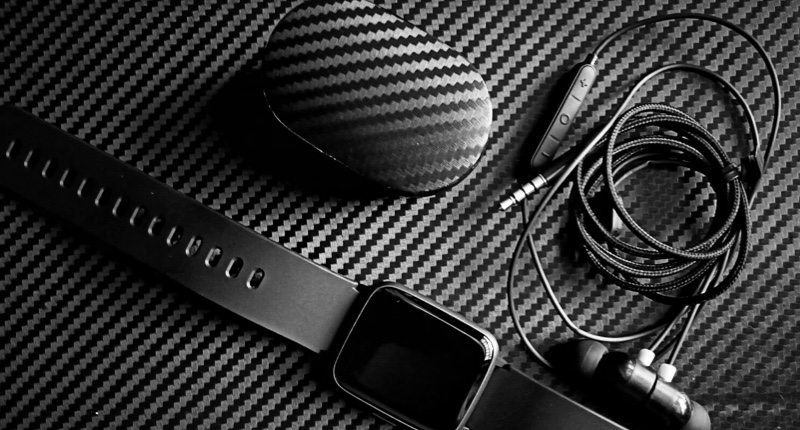Repairing and Maintaining Custom Carbon Fiber Parts: Practical Guide for Vehicle Owners
- Introduction: Why Repairing and Maintaining Custom Carbon Fiber Parts Matters
- Understanding Damage Types to Custom Carbon Fiber Parts
- Assessing Damage: Practical Inspection Methods
- DIY vs Professional Repair: What to Consider
- Step-by-Step Repair Process for Non-Structural Parts (DIY-Friendly)
- 1. Preparation and Safety
- 2. Remove Damaged Layers and Feather Edges
- 3. Apply Repair Patch
- 4. Cure and Post-Cure
- 5. Final Inspection
- Curing, Materials, and Finish Tips from Manufacturing Practice
- Maintenance Best Practices to Extend Life and Appearance
- When to Replace Instead of Repairing
- Cost Considerations and Warranty Guidance
- Conclusion: Preserve Value and Safety with the Right Approach
- Frequently Asked Questions
- References
Introduction: Why Repairing and Maintaining Custom Carbon Fiber Parts Matters
Custom carbon fiber parts are prized for their light weight, high strength-to-weight ratio, and aesthetic appeal. For vehicle owners and custom shops, proper repair and maintenance of these parts—notably body panels, fairings, and aerodynamic components—extends service life, preserves performance, and protects investment. Supreem Carbon, established in 2017, specializes in R&D, design, production, and sales of carbon fiber parts for automobiles and motorcycles. With a 4,500 m2 facility, 45 skilled staff, and over 1,000 product types (including 500+ custom parts), Supreem Carbon recommends industry best practices for repair and upkeep to maintain safety and finish quality.
Understanding Damage Types to Custom Carbon Fiber Parts
Knowing how carbon fiber parts fail helps you decide whether to repair or replace. Typical damage modes include matrix cracking, fiber breakage, delamination, impact bruising, and surface abrasion. Matrix cracks often look like spiderwebs in the resin; delamination is separation between plies and may not show on the surface; fiber breakage or through-thickness damage usually requires replacement for structural components. Identifying the damage type is the first step toward a safe and cost-effective solution.
Assessing Damage: Practical Inspection Methods
Assessing damage combines visual checks and simple non-destructive tests. Start with a clean, dry inspection under good lighting. Use the tap or ring test to detect delamination (a dead or dull sound often indicates subsurface separation). For higher-confidence inspection, consider handheld ultrasonic testers or infrared thermography where available—these detect internal defects that visual inspection misses. Always document damage with photos from multiple angles for repair records or insurance claims.
DIY vs Professional Repair: What to Consider
Deciding between DIY repair and professional services depends on part function, complexity, and safety risk. Cosmetic chips and superficial surface cracks can often be handled by experienced DIYers using patch kits. Structural components (load-bearing parts such as subframes, suspension pieces, or crash-critical elements) should be evaluated and repaired only by certified professionals. Below is a concise comparison to guide that decision.
| Item | DIY Repair | Professional Repair |
|---|---|---|
| Typical cost | Low ($20–$300 materials) | Moderate to high ($200–$2,000+, depending on complexity) |
| Tools required | Basic (sandpaper, epoxy kit, cloth patches, vacuum pump optional) | Specialized (prepreg materials, autoclave/vacuum bagging, NDT equipment) |
| Warranty | Usually none | Often provided (depends on shop) |
| Recommended for | Surface damage, minor chips, small cracks on non-structural parts | Structural repairs, large delamination, safety-critical components |
Step-by-Step Repair Process for Non-Structural Parts (DIY-Friendly)
1. Preparation and Safety
Work in a well-ventilated area and wear PPE: nitrile gloves, respirator for volatile solvents, and eye protection. Clean the area with isopropyl alcohol and remove loose debris or delaminated resin. Mask off surrounding areas to protect original finish.
2. Remove Damaged Layers and Feather Edges
Use fine sanding tools to feather the damaged area, exposing intact fibers and creating a smooth bonding surface. For delamination, open the area enough to access separated layers, but avoid removing more material than necessary.
3. Apply Repair Patch
For wet-lay repairs, cut woven carbon cloth or unidirectional plies to match the laminate orientation. Mix compatible epoxy resin (room-temperature cure or fast-cure) and wet-out the patch. Apply successive plies, matching the original ply sequence where possible. For higher-quality outcomes, use a peel ply and vacuum bagging to compact the repair.
4. Cure and Post-Cure
Allow the resin to cure per manufacturer's recommendations. Room-temperature epoxies often require 24–48 hours; some require elevated-temperature post-cure to reach full mechanical properties. If you lack an oven, avoid loading the part until full cure. After cure, sand the patch flush and finish with primer and clear coat as needed.
5. Final Inspection
Confirm the repair with visual checks and a tap test. For critical components, obtain professional NDT verification (ultrasonic or thermography) before returning the part to service.
Curing, Materials, and Finish Tips from Manufacturing Practice
Material compatibility matters: use resin systems and reinforcement fabrics similar to the original part. Prepreg systems and autoclave cures yield superior mechanical properties but require shop equipment. For visible components, match the weave pattern and clear coat to restore appearance. UV-resistant clear coats protect the resin matrix from long-term UV degradation. Supreem Carbon emphasizes testing samples when changing resin or weave type to ensure color, gloss, and mechanical performance match expectations.
Maintenance Best Practices to Extend Life and Appearance
Routine maintenance prevents minor issues from becoming major repairs. Use pH-neutral car soaps, soft microfiber cloths, and avoid abrasive compounds on clear-coated finishes. Inspect mounting points and fasteners periodically—loose fasteners can cause stress concentrations and eventual cracking. Apply UV protectants if parts are frequently exposed to sunlight. For motorcycle fairings, avoid high-pressure washers close to seams which can force water into delaminated zones.
When to Replace Instead of Repairing
Replacement is the right choice when damage compromises structural integrity, when fiber breakage penetrates the full laminate thickness, or when repairs would degrade aerodynamic performance. For safety-critical items (e.g., structural supports, crash-involved parts), replacement typically provides the most reliable outcome. Supreem Carbon offers customized replacement parts for many vehicle models, ensuring fitment and performance when repairs aren't suitable.
Cost Considerations and Warranty Guidance
Repair costs vary widely. Small cosmetic repairs can be inexpensive; complex structural repairs require skilled labor and advanced equipment, increasing cost. Ask any repair provider about certification, materials used, and warranty. Professional shops often provide limited warranties on workmanship—keep records and photographs of damage and repairs for future resale or insurance purposes.
Conclusion: Preserve Value and Safety with the Right Approach
Repairing and maintaining custom carbon fiber parts requires proper assessment, the right materials, and an understanding of risks associated with structural damage. For non-structural and cosmetic issues, careful DIY repairs can restore appearance and function. For structural or safety-critical components, rely on professional services or direct replacement. Supreem Carbon, a full-service carbon fiber manufacturer, can support both replacement and custom solutions with industry experience. Regular inspection, gentle cleaning, and preventive measures will maximize the life and look of your carbon fiber parts.
Frequently Asked Questions
Q: Can I repair a cracked carbon fiber hood at home?A: If the crack is cosmetic and limited to the clear coat or surface resin, a homeowner with basic tools and a carbon repair kit can perform the repair. For large cracks, deep fiber breakage, or if the hood is load-bearing, seek professional assessment.
Q: How do I tell if a carbon fiber part has delaminated?A: Visual signs include bubbling, soft spots, or paint cracking. The tap test (a dull sound) can indicate delamination. For accurate detection, professional ultrasonic or thermographic NDT is recommended.
Q: Are repaired carbon fiber parts as strong as new ones?A: Properly executed repairs can restore much of the original strength for non-critical applications, but repaired laminates rarely equal factory-cured prepregs/autoclave-cured parts. For structural, safety-critical parts, replacement is often the safer choice.
Q: What maintenance prevents UV damage to carbon fiber parts?A: Use UV-resistant clear coats, park in shade when possible, and apply UV protectant products occasionally. Clean gently with pH-neutral soap and avoid abrasive polishes on clear coat.
Q: When should I choose a custom replacement from a manufacturer like Supreem Carbon?A: Choose custom replacement when repair is impractical, when you want upgraded performance or appearance, or when parts are safety-critical. Supreem Carbon produces over 500 customized carbon fiber parts and can match OEM fitment and finish.
References
- CompositesWorld — industry articles on composite repair and inspection techniques.
- MatWeb — material property data for carbon fiber composites and resin systems.
- Hexcel and other composite manufacturers — technical datasheets on fibers, fabrics, and resins.
- SAMPE (Society for the Advancement of Material and Process Engineering) — papers on composite repair methodologies.
- ASTM D3039 — standard test method for tensile properties of polymer matrix composite materials (for baseline material understanding).
Custom carbon fiber for cars Manufacturers and suppliers
Custom red carbon fiber Manufacturers and Suppliers
Carbon Fiber Manufacturing: Your Guide
The List of Carbon Fiber Monocoque Cars - Supreem Carbon
For Products
Which carbon fiber material you can provide in production?
1*1 plain /2*2 twill / forged carbon / honeycomb / kevlar and so on.
Supreem Carbon parts produce by 100% carbon?
Yes,all products are made from full carbon with dry carbon.
For Order Delivery
How to choose the mode of transportation?
We use official shipment like Fedex,UPS,DHL and so on. Also customer can arrange delivery by themselves.
For Customized Service
What custom customer need to prepare?
1. Send Your Design/Idea/3D drawing.
2. Supplier Quotation Confirmation.
3. Firts Sample Feedback.
How long does the customized products order take?
This depends on the complexity and mold production cycle of the product. The first sample will be ready in 2-3 weeks after mold finished.

Yamaha R1 Carbon Fiber Side Fairings
Introducing the Supreem Carbon Fiber Long Side Panels for Yamaha R1. Crafted with precision and expertise, this front side fairing is designed to elevate the performance and aesthetics of your R1. Made from high-quality carbon fiber, this fairing is not only lightweight but also incredibly durable, providing optimal protection for your motorcycle.

Yamaha R1 Carbon Fiber Airbox Tank Cover
The Supreem Carbon Yamaha R1 Carbon Fiber Airbox Tank Cover provides lightweight, durable protection with a sleek finish. Designed for R1 models, it enhances the style and performance of your bike. Its lightweight structure improves performance while maintaining the premium aesthetics necessary for high-end modification projects. As a dedicated manufacturer of carbon fiber parts, we provide stable production capacity, customization options, and strict quality control to support enterprise-level procurement and OEM/ODM needs.

Carbon Fiber Rear Seat Panel for BMW S1000R & M1000RR – Lightweight Performance
This carbon fiber rear seat panel is engineered for the BMW S1000R and M1000RR, offering superior rigidity, reduced weight, and a premium racing finish. Produced with autoclave technology and strict QC standards, the part ensures consistent OEM-level fitment. Supreem Carbon provides wholesale supply, stable bulk production, and customized solutions for global clients.

High-Performance Carbon Fiber Rear Undertail for BMW S1000R
Engineered for distributors, tuning brands, and motorcycle accessory businesses, the BMW S1000R Carbon Fiber Rear Undertail is a high-quality, durable, lightweight carbon fiber upgrade for the S1000R platform. This component is manufactured using aerospace-grade carbon fiber and precision molds to deliver superior stiffness, a seamless OEM-level fit, and a premium visual finish suitable for high-end aftermarket applications.
© 2024 Supreem Carbon All Rights Reserved.





Facebook
Pinterest
LinkedIn
Instagram